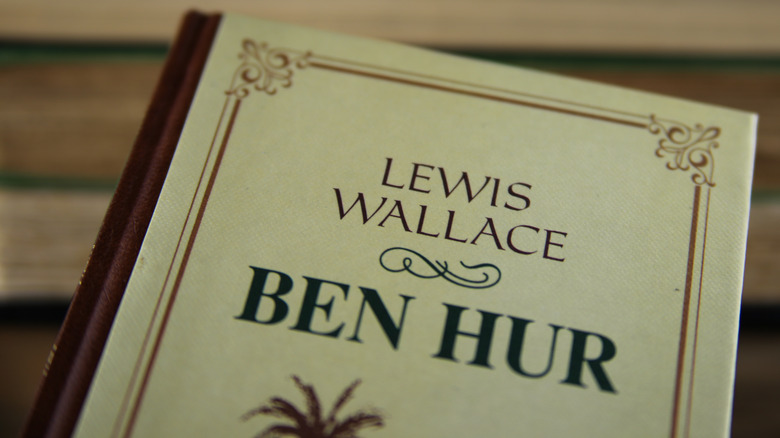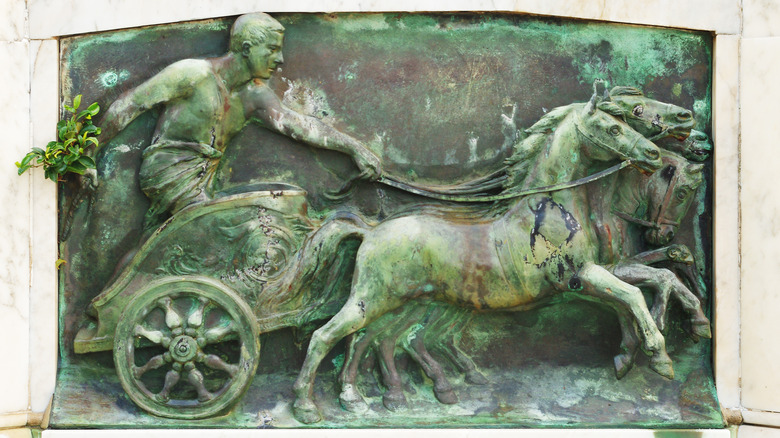Is Ben-Hur Based On A Real Person?
The 1959 film "Ben-Hur" became iconic because of its groundbreaking special effects that seemed ahead of their time. The film won 11 Oscars at the 1960 Academy Awards including those for best picture, best director, best editing, and of course, best cinematography and best special effects. Its rereleases on new media platforms like DVD and Blu-Ray won awards as well, such as the International Film Music Critics Award for best rerecording of an existing score (via IMDb).
"Ben-Hur" was originally a novel titled "Ben-Hur: A Tale of Christ," and was written by Civil War veteran General Lew Wallace in 1880. The NEH explains that It was the highest selling book each year for the first 50 years that it was in print (save for the Bible). Even U.S. President Andrew Garfield and President Ulysses S. Grant read it. Wallace became a celebrity known the world over, with fans writing to him regarding the impact that the book had on them.
The story depicts the life of Judah Ben-Hur
"Ben-Hur: A Tale of Christ" was religious and historical in that it depicts early Christianity, the life of Jesus Christ, Roman occupation of Jerusalem and present-day Israel, and even chariot racing. The novel follows Jewish prince Judah Ben-Hur whose Roman childhood friend Messala accuses him of trying to kill a Roman official. Ben-Hur is sent into slavery and his family to prison. With help and inspiration from Jesus Christ, Ben-Hur makes a triumphant return by beating Messala in a chariot race. Upon reuniting with his family, he witnesses the Crucifixion and his family joins him in converting to Christianity (via Britannica).
This sounds rather consistent with stories in the Bible as well as ancient history. The story has also been retold so many times — including the classic 1959 film — that it makes it hard to recall the exact details that were in the original book. However, even the original version from General Lew Williams was a fictional novel.
Ben-Hur was only somewhat historically accurate
Judah Ben-Hur is a fictional character. Some of the historical plot-points are a bit fictional as well, or at least inaccurate to actual Roman history, According to The Guardian, Ben-Hur was a slave in the galleys (ships propelled by oars), but the Romans did not use galley slaves at the time during which "Ben-Hur: A Tale of Christ" takes place. The financial rewards that Ben-Hur hopes to receive from winning chariot races was accurate, however.
Inaccuracies aside, what was — and what remains — more important is the Biblical tie-ins that made "Ben-Hur: A Tale of Christ" into one of the best-selling books of all time. Ben-Hur spends most of his life aiming to get revenge on Messala and the Romans. This is why he wanted to become a charioteer. He encounters Jesus Christ throughout his journey. Upon witnessing the Crucifixion of Jesus, he sees that Jesus did not desire revenge and instead champions forgiveness. Ben-Hur chooses to change his ways and is soon reunited with his family (via The Trumpet). Though the story of Ben-Hur is not based on a real person, the story's lessons are applicable even more than a century after General Lew Wallace wrote it.


